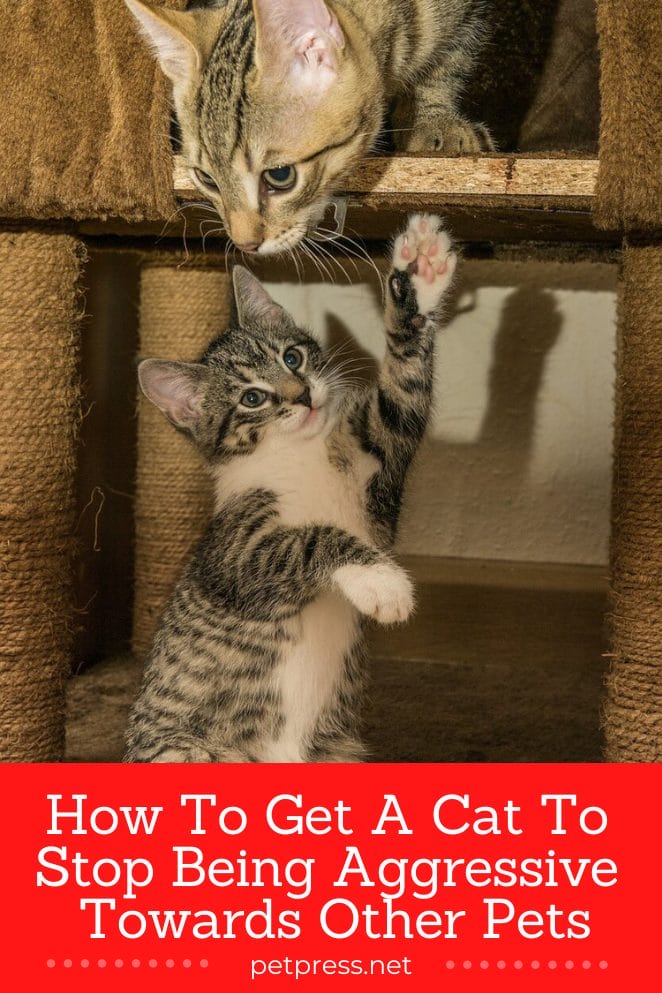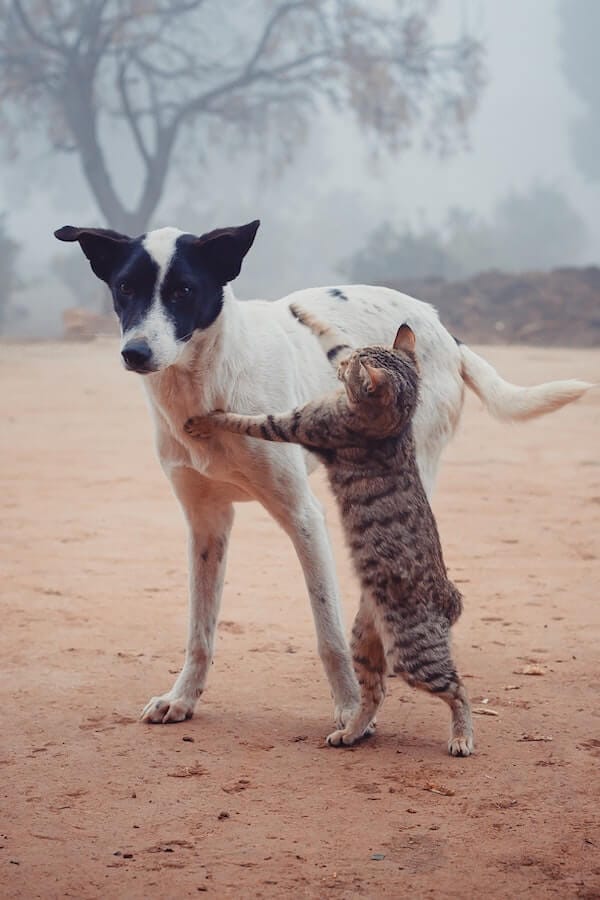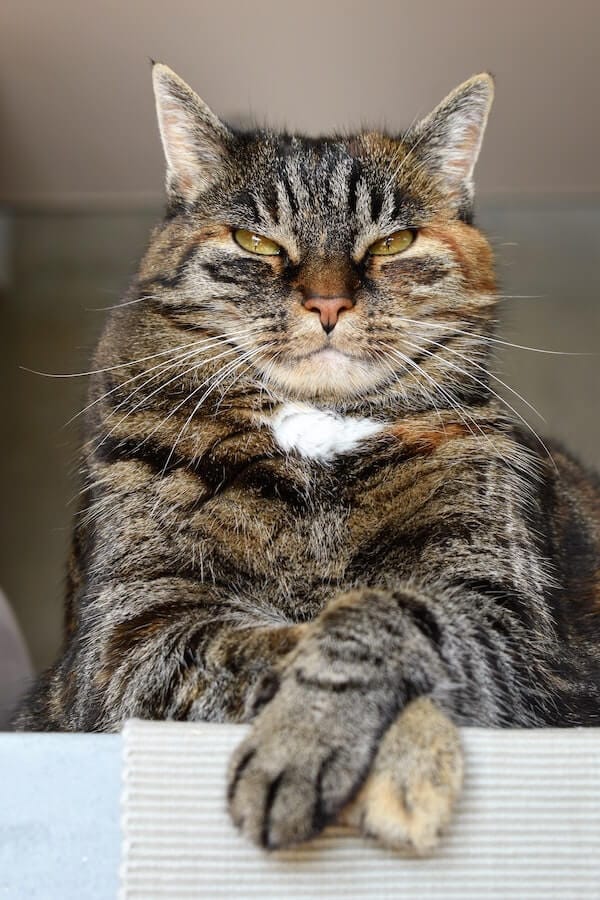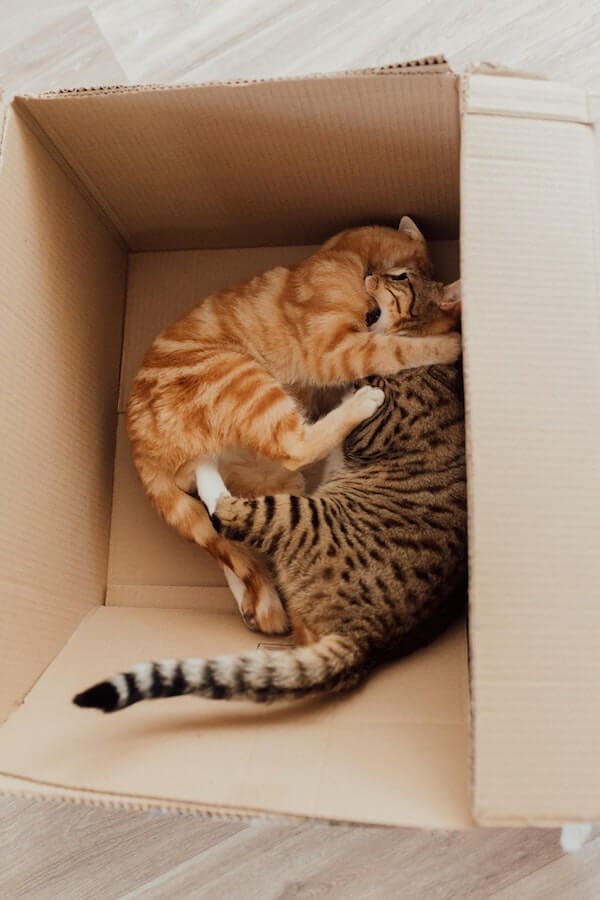
If you’re looking for ways how to get a cat to stop being aggressive toward other pets, then you’ve come to the right place!
It can be difficult and frustrating when your beloved pet has an unpleasant behavior that needs addressing.
But never fear. With some patience, understanding, and perhaps a few tactics, you can help your cat become more comfortable around other animals.
With the right approach, it’s possible to fade out or even eliminate aggressive behaviors in cats so they can coexist harmoniously with their furry (or feathered) friends.
Read on for helpful tips and tricks on how to get a cat to stop being aggressive toward other pets!
Why is my cat aggressive toward other pets?

If your cat is particularly unfriendly toward other pets, it could be due to a number of factors.
Here are 5 possible explanations for why your cat is aggressive toward other animals:
1. Territoriality
Cats have a strong sense of territory and can express aggression when they feel another animal has encroached on their space.
2. Fear
When cats feel threatened by the presence of another pet in the house or outside, they can become aggressive as an act of self-defense.
3. Frustration
Just like humans, cats can become frustrated when they don’t get what they want. This frustration can manifest itself in aggressive behavior towards other pets.
4. Illness
If your cat is feeling sick or unwell, it may display aggression to keep other animals away.
5. Lack of socialization
When cats are exposed to different pets at an early age, they learn how to properly interact with them.
If your cat wasn’t socialized while young and doesn’t know how to behave around other animals, it will likely be aggressive as a result.
If your furry friend is displaying any of these behaviors, it’s important that you consult a veterinarian for advice on how to help them become more comfortable around other pets.
What are the signs of an aggressive cat?

If your feline friend is displaying any of the following signs, chances are good you’re dealing with an aggressive cat.
While it can be alarming to see such behaviors in our purring pals, there are ways to help your kitty get his or her aggression under control.
Here are five telltale signals that your cat may be feeling a bit too feisty:
1. Hissing and Growling
A hissing sound or guttural growl can indicate that your cat perceives danger and feels threatened.
2. Biting and Clawing
Cats who feel cornered may lash out with their claws or bite to defend themselves.
3. Recognizing Patterns
If your cat gets aggressive when you reach for his food bowl or pet him in certain areas, he’s likely trying to protect something important to him.
4. Over-Grooming
An increase in licking and grooming can be a sign of stress that could lead to aggression if left unchecked.
5. Not Showing Affection
Rarely enjoying cuddles or being touched by humans is an indication that your cat isn’t getting enough positive reinforcement from those interactions and can therefore become more prone to aggression.
Fortunately, there are things you can do as a responsible pet owner to get your kitty back on the path of calmness and contentment.
How to get a cat to stop being aggressive towards other pets

For those of us with multiple pets, the joys and pitfalls of living in harmony can be a tricky thing to master.
If your cat is being overly aggressive towards other animals in the house, don’t despair. There are some steps that you can take to get them back on track.
Here are seven steps you can take to ease the tensions:
1. Observe the situation:
The first step is observation. Examine how your pets interact and try to identify what’s causing aggressive behaviors.
This could be anything from territorial disputes to fear-based reactions due to past experiences.
2. Separate the pets:
To help keep the peace, you may have to separate your pets for short periods of time.
This can be done using baby gates or other physical barriers that allow the animals to see and smell each other, but not touch each other.
3. Reintroduce gradually:
Once separated, start reintroducing your pet at a comfortable distance. Make sure they are supervised while they interact.
If things get heated, separate them again and try again later when everyone is calmer and more relaxed.
4. Offer rewards:
Rewarding good behavior is a great way to encourage positive interactions between pets.
Each time your cat shows nonviolent behaviors towards another animal in the house offer a treat or verbal encouragement.
5. Create distractions:
Redirect aggression by offering toys and other activities that your pets can engage in together.
This gives them a chance to bond without feeling the need to fight for attention or territory.
6. Desensitize with help from an expert:
If you’ve tried all of these steps but still have issues with aggressive behavior, it may be time to call in a professional trainer.
They will be able to provide more advanced advice on how to get your pet comfortable around each other again.
7. Be patient:
With patience and consistency, you’ll eventually see positive changes in your pet’s attitude towards other animals in the house.
It may take some time, but eventually, your pet will learn to live in harmony with others.
What age are cats most aggressive?

Cats are known for their independent and sometimes aloof personalities, but they can also display aggression when provoked.
Generally speaking, cats become more prone to aggressive behavior as they reach the age of maturity. This typically occurs around 2-3 years old.
This is especially true if a cat has not been neutered or spayed, as hormones come into play during these periods of life.
However, that being said, there’s no definite answer: some cats may remain calm and peaceful even in their later years while others may grow grumpier with age!
It all depends on the individual kitty’s personality.
Conclusion
Living with a cat that is aggressive towards other pets can be a stressful experience, but it doesn’t have to stay that way.
With the right guidance and patience, you can understand how to get a cat to stop being aggressive toward other pets in a multi-pet home.
Correctly introducing your cat can bring a lot of ease when it comes to cat aggression.
Follow these seven steps for getting your kitty to stop being aggressive toward other pets and soon enough you’ll be back on the path of purrrfect harmony!
- 7 Dog Breeds With Webbed Feet And Why Do They Have Them - July 19, 2023
- 10 Best Fish For Small Tanks That Make Perfect Pets - July 18, 2023
- How to Breed Guinea Pigs: A Detailed Guide - July 17, 2023


GIPHY App Key not set. Please check settings